In 1998, I was commissioned by the Washington Post to illustrate the book review of Toni Morrison’s new novel Paradise. It is still one of my favourite images. But a review is an arm’s length relationship to a book, a view through another’s eyes rather than the authors.
In early February of 2014 my work came into the view of Nobel prize winning author, Toni Morrison. The UK publisher Folio Society had proposed an illustrated edition of her 1987 novel, Beloved. The publisher asked me to create a sketch as an audition image, as Toni Morrison was going to approve the Illustrator to work on the book. I was given 2 weeks to present a sketch to indicate how I would approach illustrating the novel. Reading and research consumed me.
Beloved is a novel of fiction inspired in part by the story of Margaret Garner, who escaped from the slave state of Kentucky in 1856 to the free state of Ohio. U.S. Marshals pursued her and as they captured her, she killed her youngest daughter to stop her from being returned to slavery. In the novel, the death of the child haunts the mother Sethe and gives rise to Beloved, a young woman who Sethe believes is the child she killed. Having the time and place helped to focus my research.


I read this quote from Toni Morrison, “the author’s job is to make spaces for the reader to enter” and it connected with my belief that my role was to allow the reader to experience the beautifully written visual passages in the book in their imagination and not interpreted through my visual lens. But I needed to come up with a singular image that could express my approach to the novel.
Early in the novel, Sethe reveals the horrible scars from a whipping to her back that are described as looking like a Chokecherry tree. This is a poignant moment and a critical part of the story to express. I thought I had the image and the deadline was approaching. I was uploading my finished sketch …
And I stopped. The passage in the book describes Paul D, who had also escaped from the same plantation in Kentucky, gently revealing the scars on Sethe’s back. “And when the top of her dress was around her hips and he saw the sculpture her back had become, like the decorative work of an ironsmith too passionate for display, he could think but not say, “Aw, Lord, girl.” I had created a graphic isolated image, and this was not what was on the page. My editorial Illustrator brain had taken over and I needed to step back into the telling of the story—-pick up the narrative thread that Toni Morrison was weaving. I asked for a few more days.
My next sketch changed everything, it showed the connection between these two people that are sharing an incredible moment of vulnerability. I also decided that I was going to do a finished painting, the best way to express my vision for the art was to work on a final. I submitted the final on my birthday.
Two weeks later I was informed I would be illustrating the 9 (now 8) interior illustrations and doing the book cover of Beloved. Each illustration was going to be situated beside the text it was pulled from and they needed to be spaced throughout the novel. Thus began an 8 month journey of building a visual approach under the watchful eye of the author.
I began by trying to create each character and Beloved was critical as I saw her as potentially on the cover as well as in the interior images. The strength of my work is the portrait and figurative aspect of the characters and so as I focused on telling the story of the novel’s characters. As I worked with Toni Morrison and she reviewed different ideas for the sketches, it became more clear that each image would be driven by a singular character or a dramatic event with 2 or more characters. The thread that could link these 9 images together had been found.
Sethe is at the center of the story and I did a number of drawings exploring her path throughout the novel. The first image involved a ghostlike apparition of a white dress, “A white dress knelt down next to her mother and had it’s sleeve around her mother’s waist.”
The next image of Sethe is another scene of the supernatural interceding in the narrative. Sethe is imagining having her neck being rubbed by her mother-in-law Baby Suggs, who had died years earlier. The hands become stronger and then she is being strangled,”Tumbling forward from her seat on the rock, she clawed at the hands that were not there.”
The final image of Sethe takes us back in time as she sees the men on horseback with rifles searching for her and her children. This piece was wholly inspired by the simple, spare, and desperate prose… “She just flew. Collected every bit of life she had made, all the parts of her that were precious and fine and beautiful, and carried, pushed, dragged them through the veil, out, away, over there where no one could hurt them.”
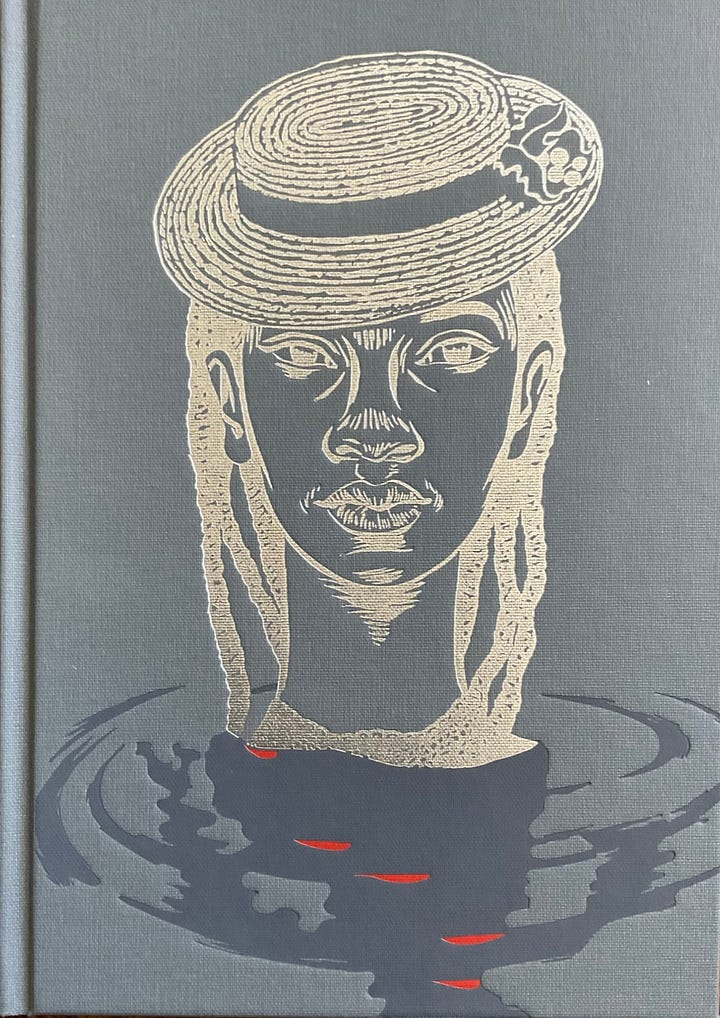

I also designed the Books spine and the cover and chose a cloth binding with a silver and red blocked image on the cover. The cover probably had the most iterations of the entire project. I began with a number of images of elements from the book, the haunted house, the chokecherry tree…but none of them were working. When I began playing with reversing my tonal values in Photoshop to mimic the silver blocking, all of a sudden the idea of a ghost appeared. The red drops were both an allusion to the wound inflicted on the child and the shards of stone from the gravestone with its solitary engraved word Beloved paid for by Sethe’s body.
It took nearly 4 years for me to find out what Toni Morrison thought about my work for Beloved…..but that’s another story.




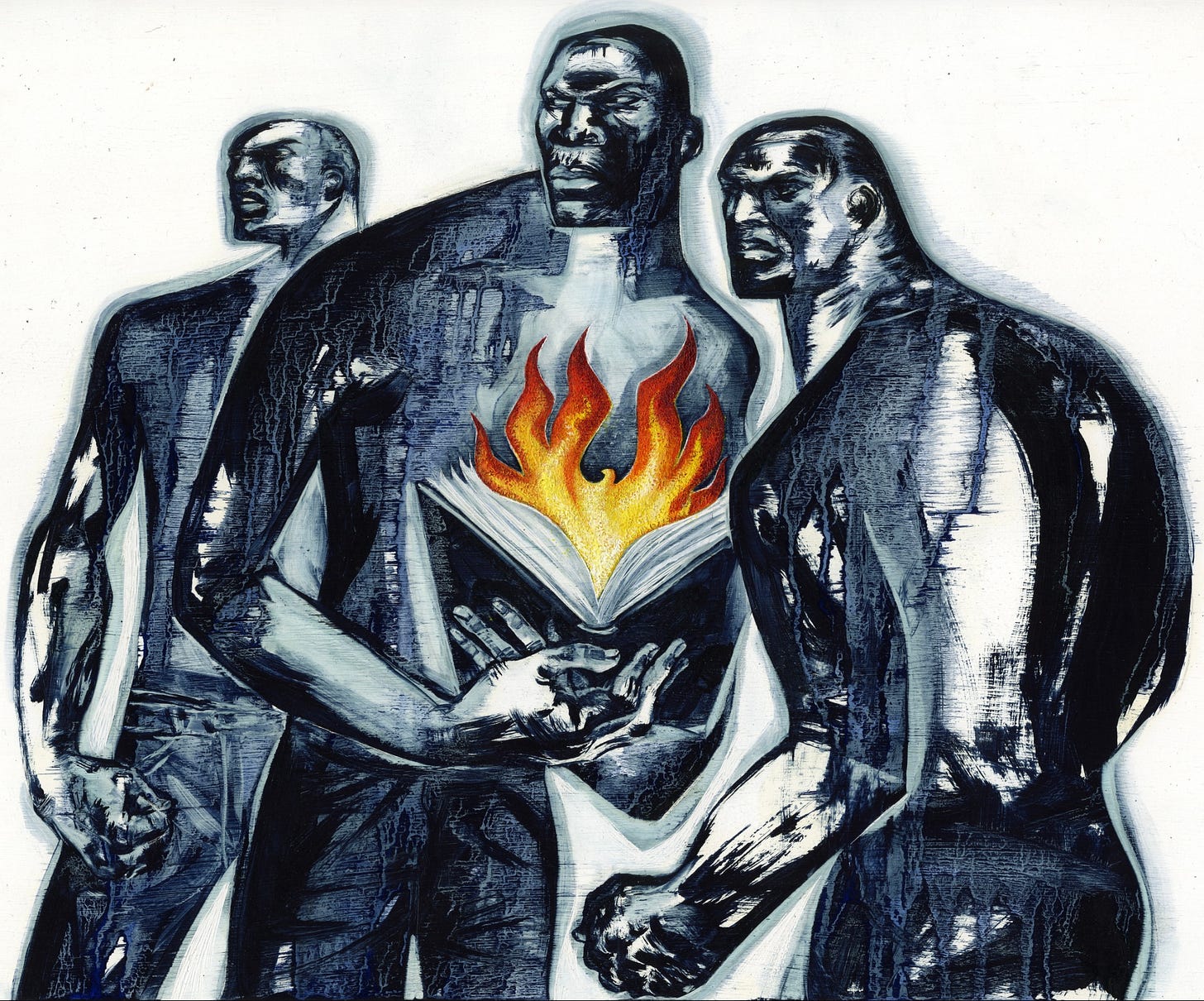
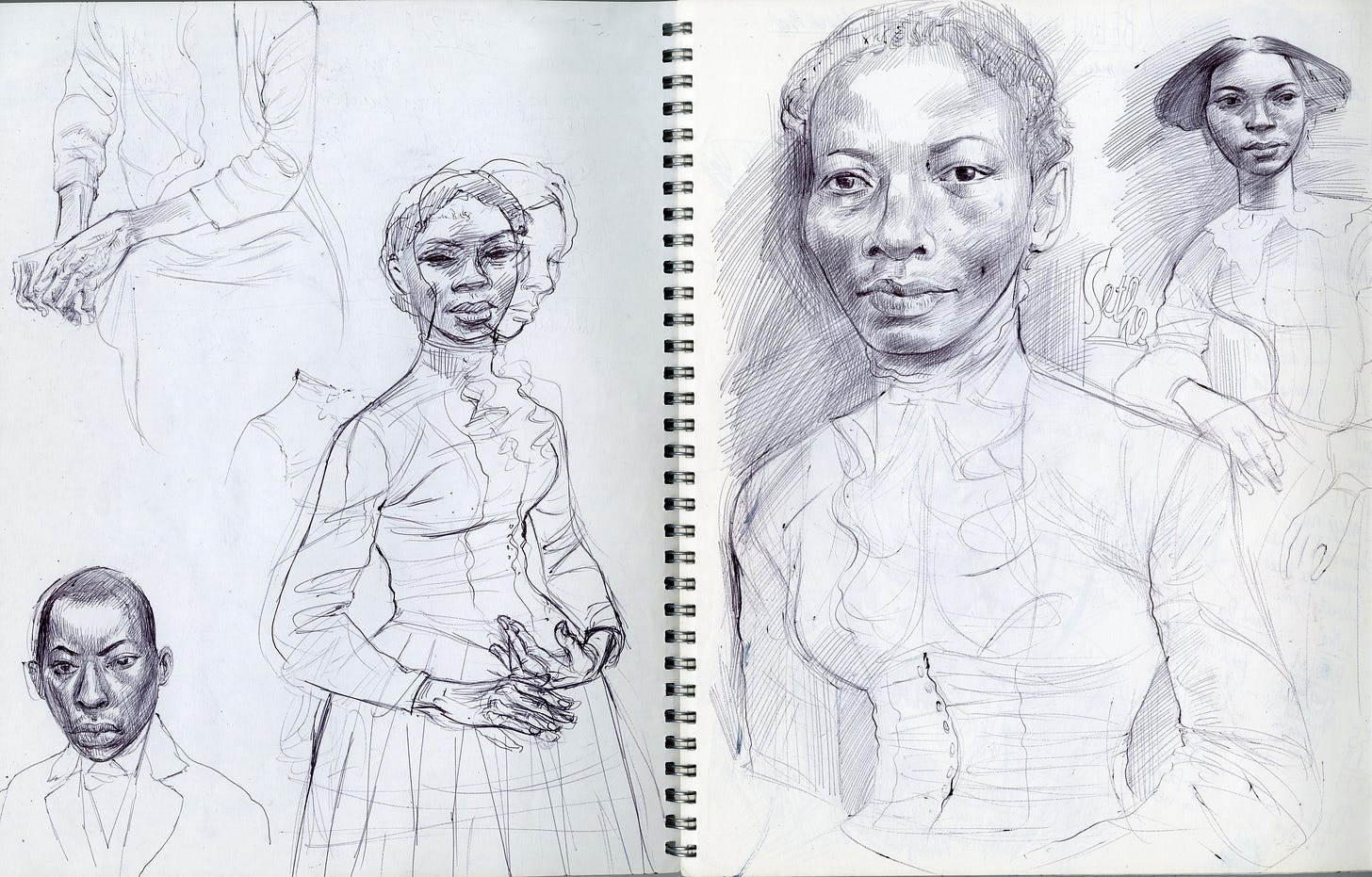
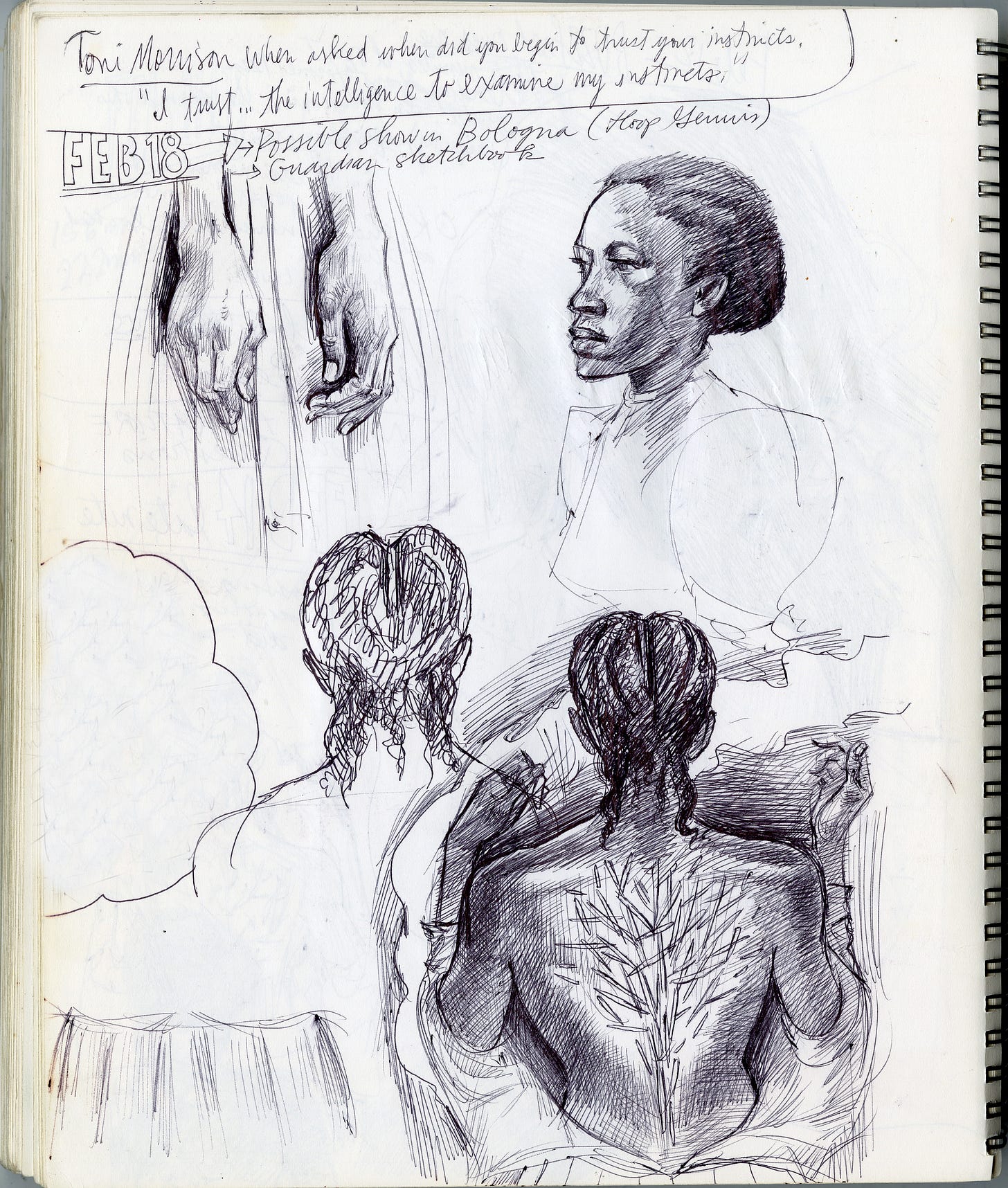

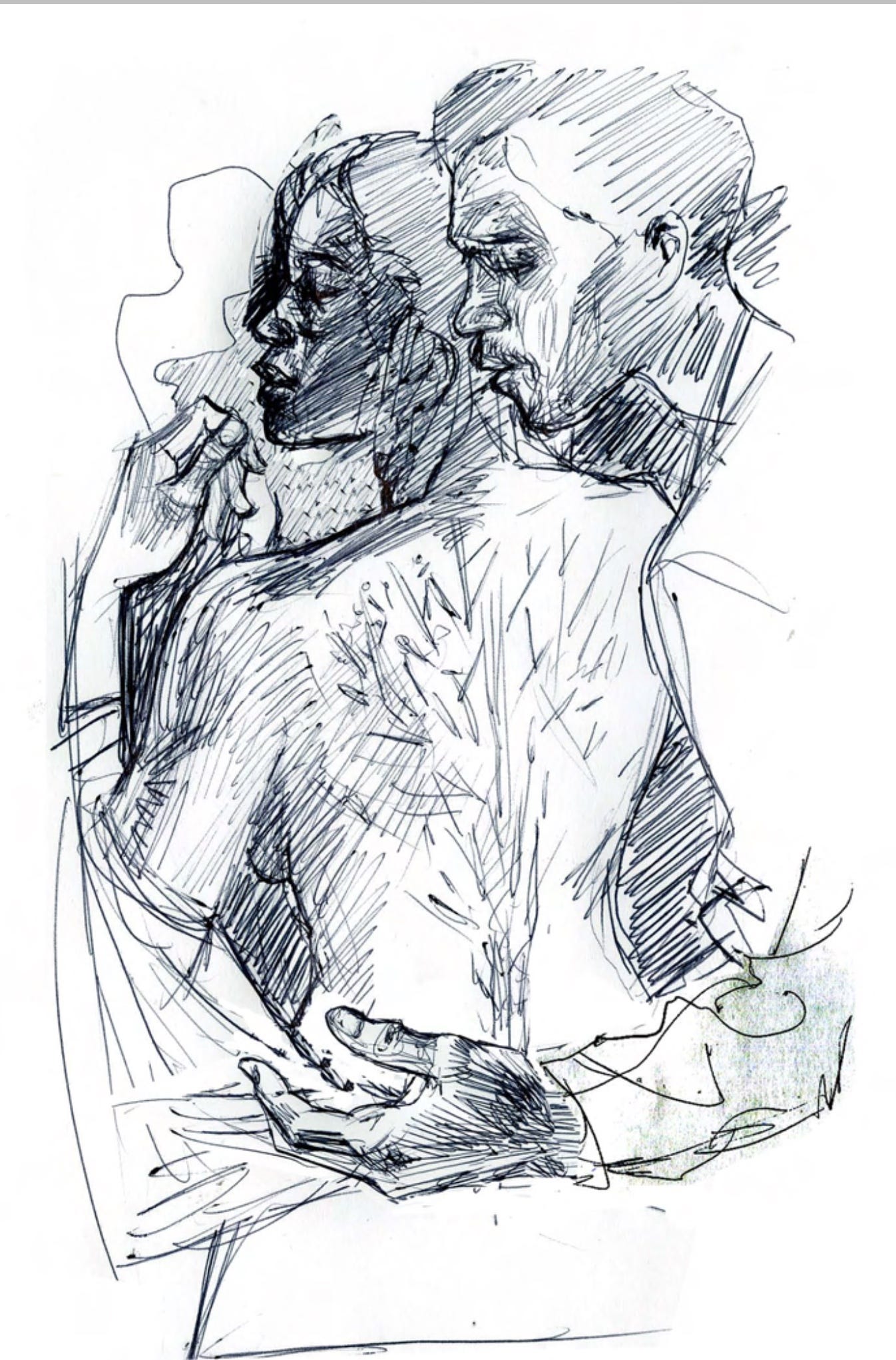
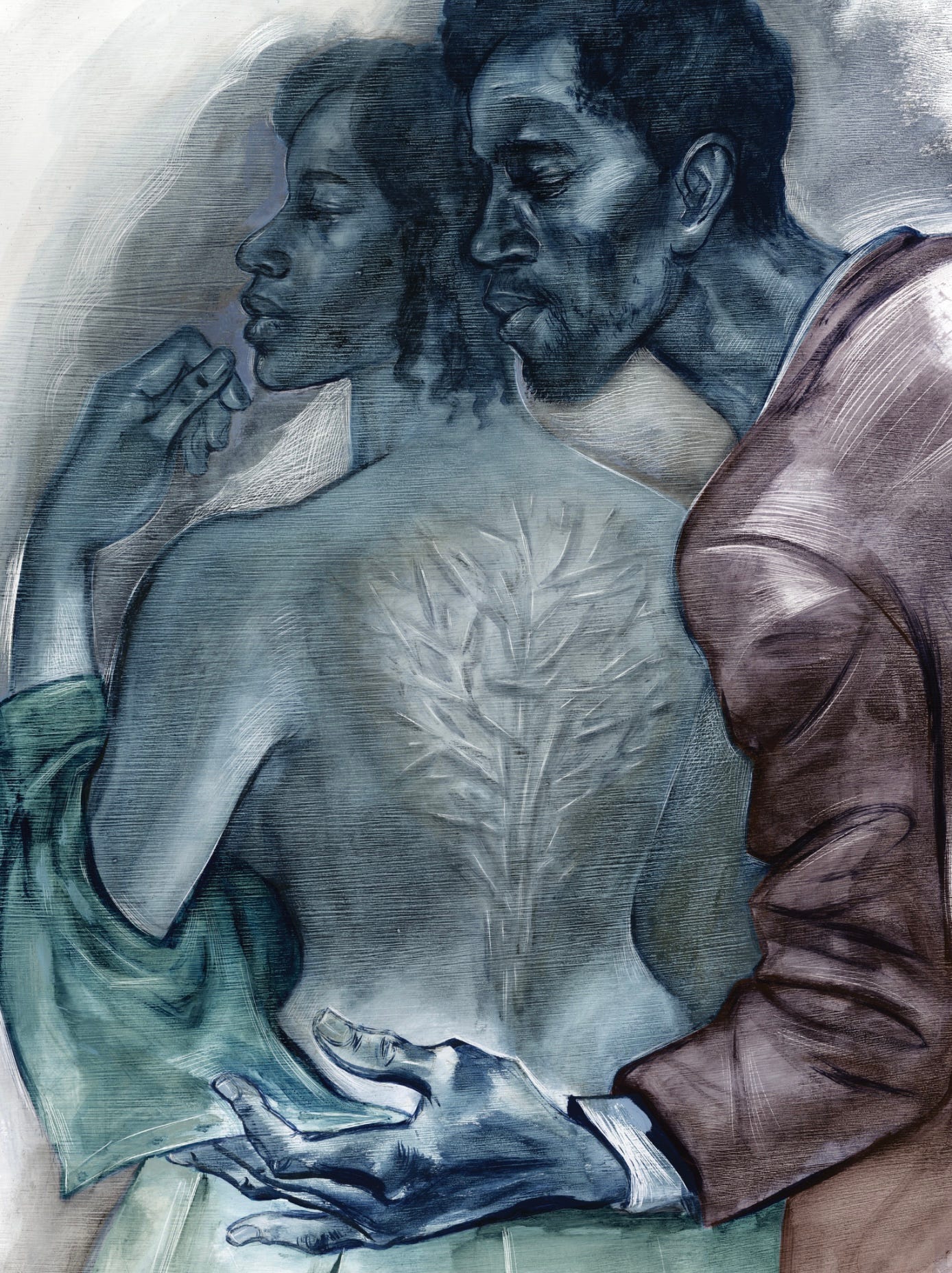
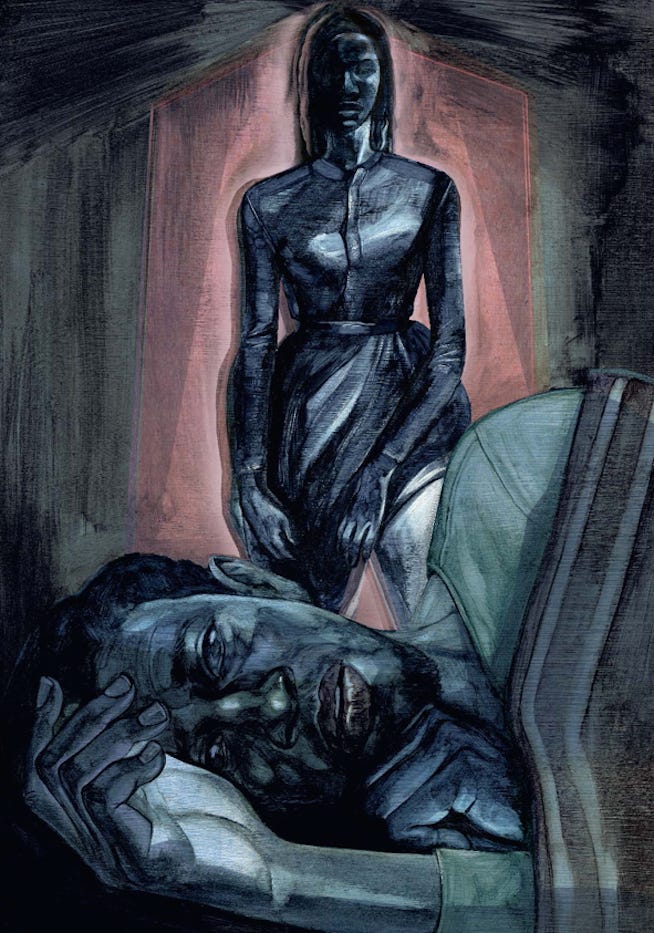
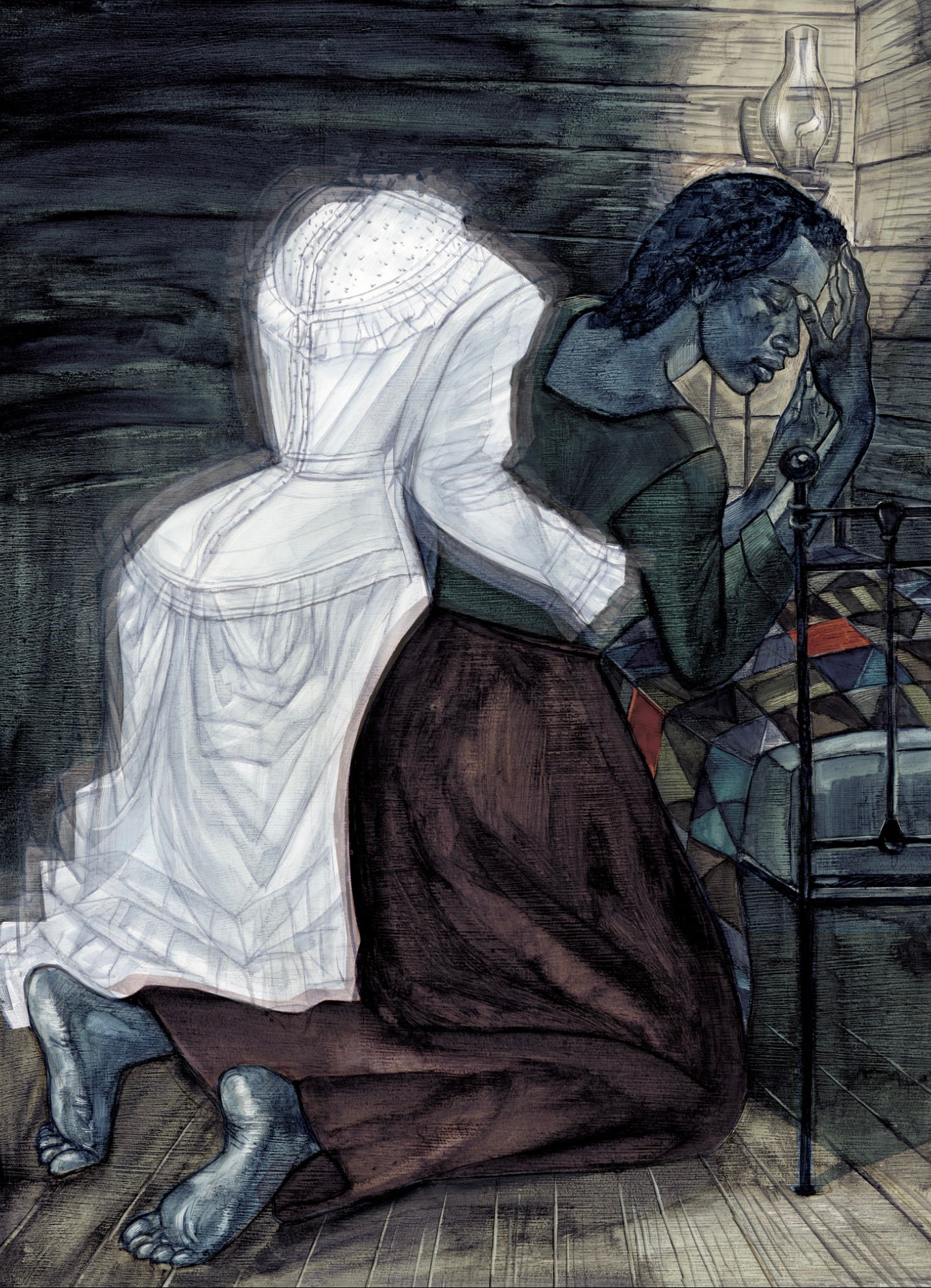
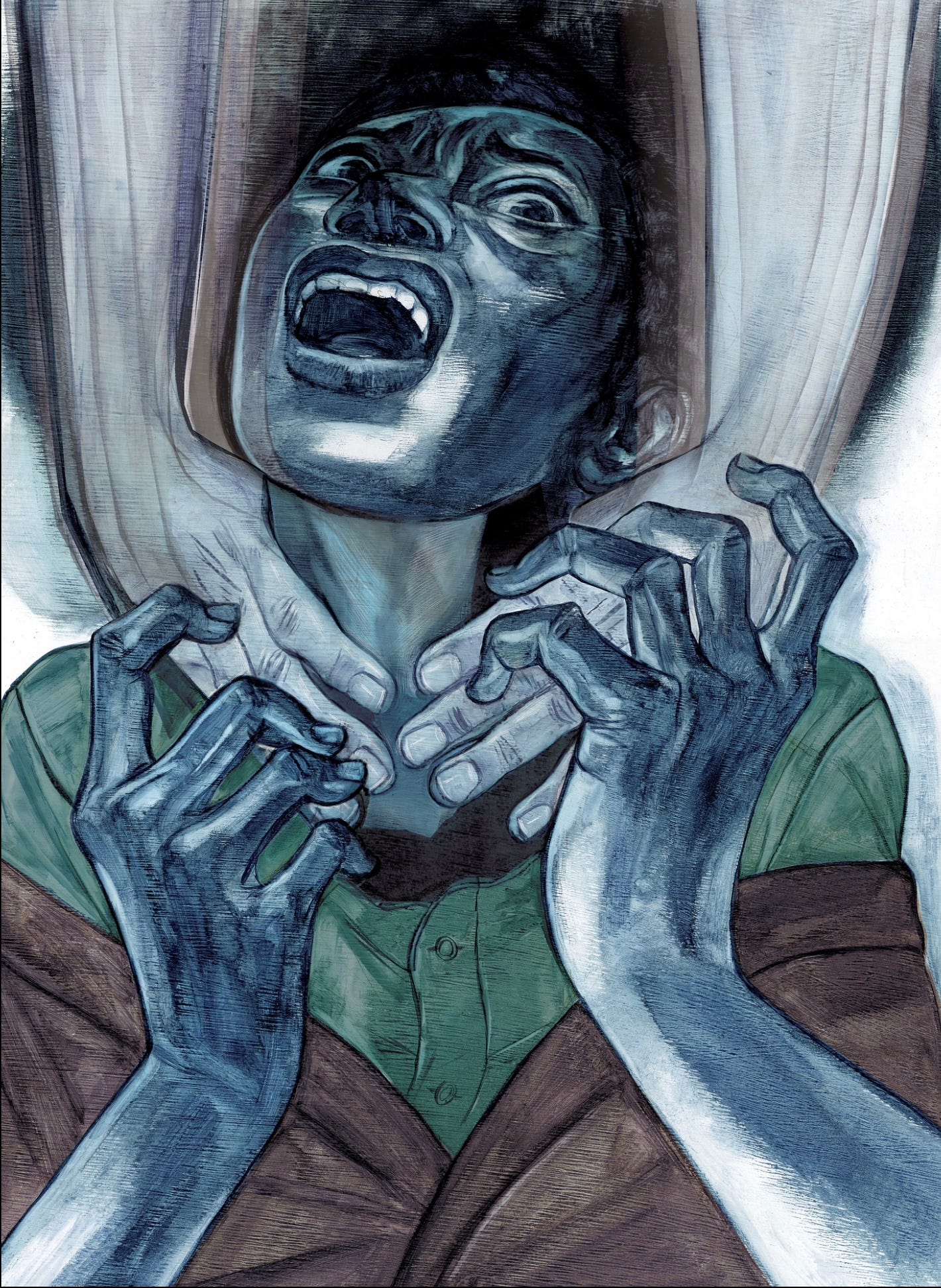

Wonderful journey down your creative path Joe. What a gift to her words are the contribution of your respectful and powerful illustrations. You walked the tightrope with aplomb.
And of course I am now reminded that your work was featured in that wonderful documentary on her